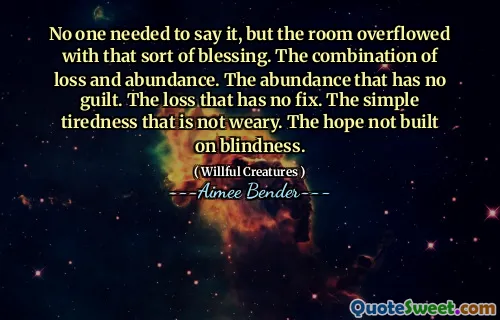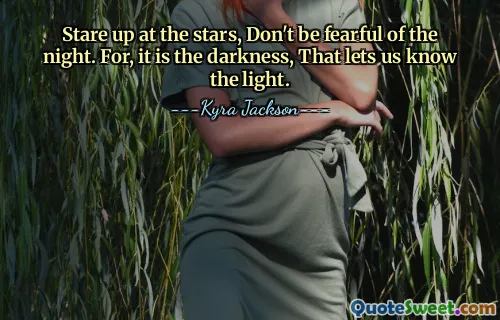
The girl danced like light on water. After I'd watched for a while I looked with all of me, not just my eyes, and then I saw the meaning of the dance. I wanted to stop looking because it was so sad, but I couldn't because it was so beautiful.
This quote captures a poignant intersection between beauty and sorrow, embodied in the metaphor of the girl dancing like light on water. The imagery suggests something ethereal and delicate, fleeting yet arresting. The speaker's experience evolves from mere observation to a deeper, more empathetic understanding — they no longer see the dance superficially but with the entirety of their being. This evokes how true perception requires openness not only of the eyes but also of the heart and soul.
The dance itself becomes a symbol: at once a source of profound sadness and stunning beauty. This duality resonates because life often intertwines joy and grief, highlighting complexity rather than simple emotions. The speaker's conflicted desire to stop looking but simultaneously to remain captivated reflects our human tendency to cling to what moves us deeply, even if it stirs pain. There is an acceptance here that to perceive beauty fully often means confronting uncomfortable truths.
In a broader context, this quote encourages mindfulness and emotional presence in observing the world around us. It challenges us to look beyond surface appearances and appreciate subtle, complex realities. Through this lens, pain and beauty are not opposites but intertwined facets of meaningful experiences. The quote is a beautifully written meditation on empathy, vulnerability, and the human capacity to embrace contradictory emotions all at once.
Overall, it is a delicate, yet powerful reminder that beauty often contains traces of sadness, and that truly seeing something in its full emotional depth can transform our understanding of the world and ourselves.






